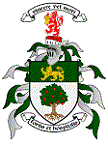Prince of Eckmühl
Posts: 2459
Joined: 6/25/2006
From: Texas
Status: offline

|
quote:
ORIGINAL: garymc
Your first task is to ready a search. Once you have your search aircraft brought up from the hanger deck, you can then assign a search mission. So, for instance, you assign 14 SBDs from the VS group to a search arc of 190-310. Because the US VS groups are set up in pairs (as they did historically), you'll get 7 searches flying search patterns within that arc (generally to your west in that case).
Be sure to have your TF headed into the wind, and launch them.
Then, you'll likely want to get your first CAP of the day up. You'll assign them a Patrol mission, with their Patrol target being your carrier. This will lead them to hover over your TF, looking for enemy snoopers.
Once that's launched, you can begin to bring your strike aircraft up from the hanger and get them spotted, ready for when your search group finds something.
Once you spot the enemy, you can launch your strike, with the # and type of aircraft you want, and send them on their way. You can manually control aircraft, but generally, at least until they go in for the attack, it's best to let the AI fly them to their target.
In the meantime, you'll likely have enemy snoopers lurking. You'll likely want to vector some F4F's from your CAP to shoot them down. The enemy will likely already have his strike headed your way, but that way he'll at least be working on outdated location information. At this point, I'd probably be bringing up supplemental F4F's to relieve/reinforce the CAP as circumstances require.
Once your aircraft go in to attack, you can either let the AI direct the attack, or manually direct certain aircraft groups to go after certain targets. Then your aircraft return, and assuming your carriers are still afloat, you can rearm, respot and relaunch as necessary.
I always compare games of this variety to their boardgame counterparts, very few of which go into the level of detail described above. Notable exceptions to the boardgaming paradigm would include Carrier Battles (Rising Sun Simulations) and Fast Carriers (SPI), both of which allowed some modicum of player control over the tactical part of the battle. In the overwhelming majority of instances, however, the tactical portion of boardgames is COMPLETELY abstracted, a good example being Flat Top from Battleline (and of course AH). By extension, the design of computer simulations of carrier combat can be viewed through the exact same prism, with games consistently eschewing the tactical for the operational. As different as War in the Pacific and Carriers at War may be, they are 100% faithful to their boardgaming antecedents in this regard. These comments made, this HPS Midway game has piqued my interest, somewhat, as garymc's comments appear to indicate that it deviates from some long-established norms.
PoE (aka ivanmoe)
_____________________________
Government is the opiate of the masses.
|
 Printable Version
Printable Version




















 didn't know that, and i printed out the whole manual and put it in a three ringed binder, not that i read the whole thing...
didn't know that, and i printed out the whole manual and put it in a three ringed binder, not that i read the whole thing...
 New Messages
New Messages No New Messages
No New Messages Hot Topic w/ New Messages
Hot Topic w/ New Messages Hot Topic w/o New Messages
Hot Topic w/o New Messages Locked w/ New Messages
Locked w/ New Messages Locked w/o New Messages
Locked w/o New Messages Post New Thread
Post New Thread